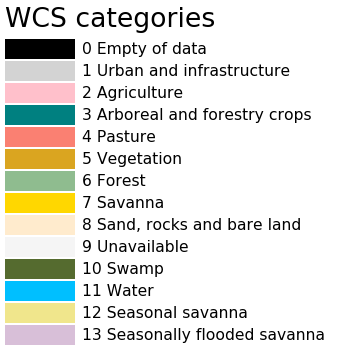Siyu/inference batched |
||
|---|---|---|
| constants | ||
| data | ||
| evaluation | ||
| finetuning | ||
| training_wcs | ||
| visuals | ||
| .gitignore | ||
| CODE_OF_CONDUCT.md | ||
| LICENSE | ||
| README.md | ||
| SECURITY.md | ||
| commands.sh | ||
| environment.yml | ||
| environment_solaris.yml | ||
README.md
Land cover mapping the Orinoquía region
In this AI for Earth project, we worked with the Wildlife Conservation Society Colombia (WCS Colombia) to create up-to-date land cover maps of the Orinoquía region in Colombia. This natural region encompasses a high diversity of ecosystems, from seasonally flooded savanna to rainforest. In recent years, agricultural production has expanded, causing changes in these ecosystems. It is therefore critically important to present information on land use to policy makers so that they may balance the need for agricultural development and conserving the biodiversity and ecological functions of the region.
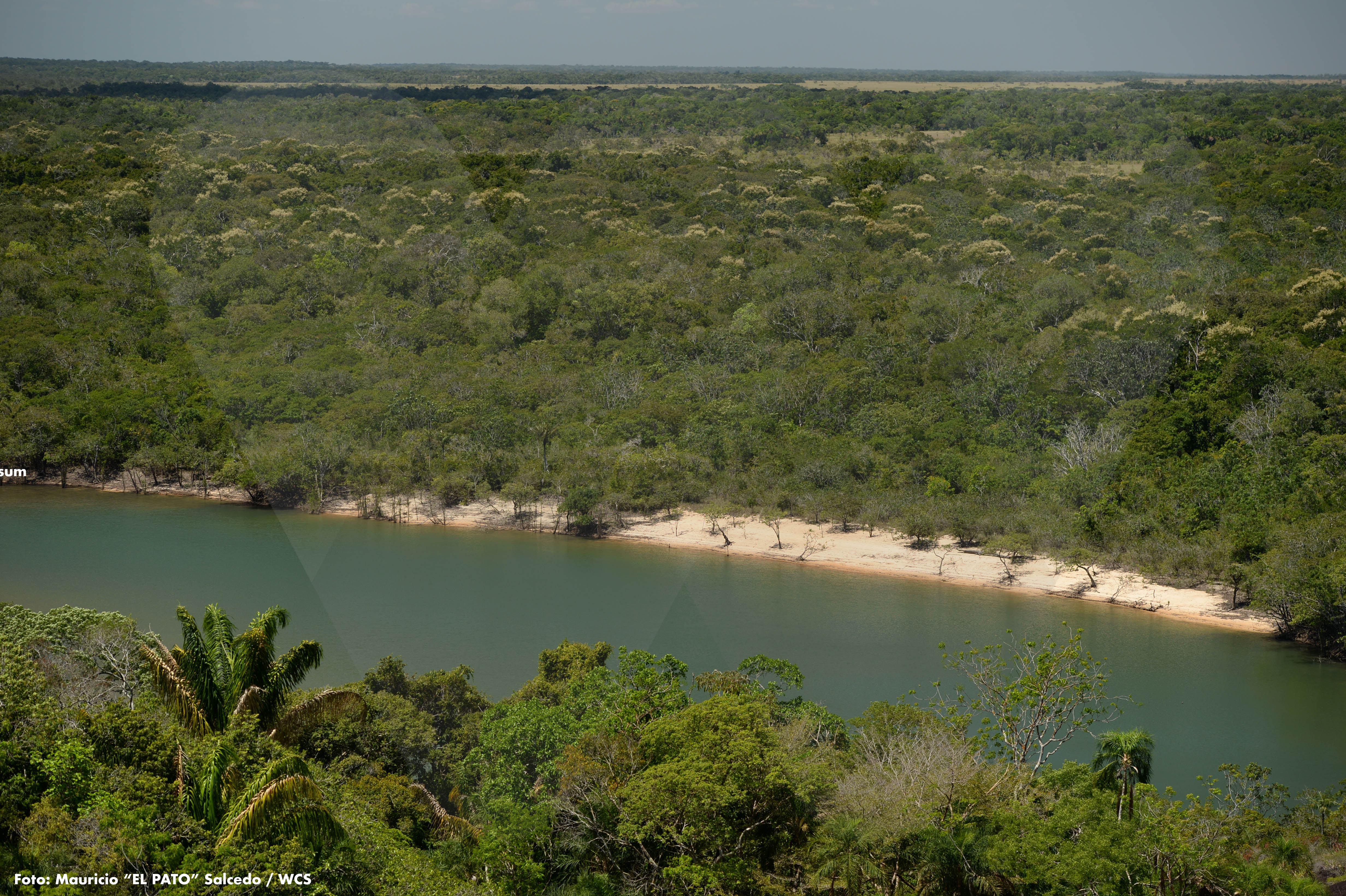 Landscape near Sabanas, Colombia. Photo credit Wildlife Conservation Society.
Landscape near Sabanas, Colombia. Photo credit Wildlife Conservation Society.
Specifically, we used a land use and land cover (LULC) map that was manually produced using satellite imagery and field data from 2011-2012 to train a semantic segmentation model for 12 land cover classes. The model can be applied to composites of Landsat 8 imagery collected in subsequent years to enable ecological analysis.
This repo contains the scripts and configuration files used to train the land cover model using a median composite of Landsat 8 images from 2013-2014. We will be evaluating the result of applying the model to 2019-2020 imagery and releasing the resulting maps in the coming months.
Category color map:
Labels based on imagery in 2011-2012, mapped to the 12 land cover classes:
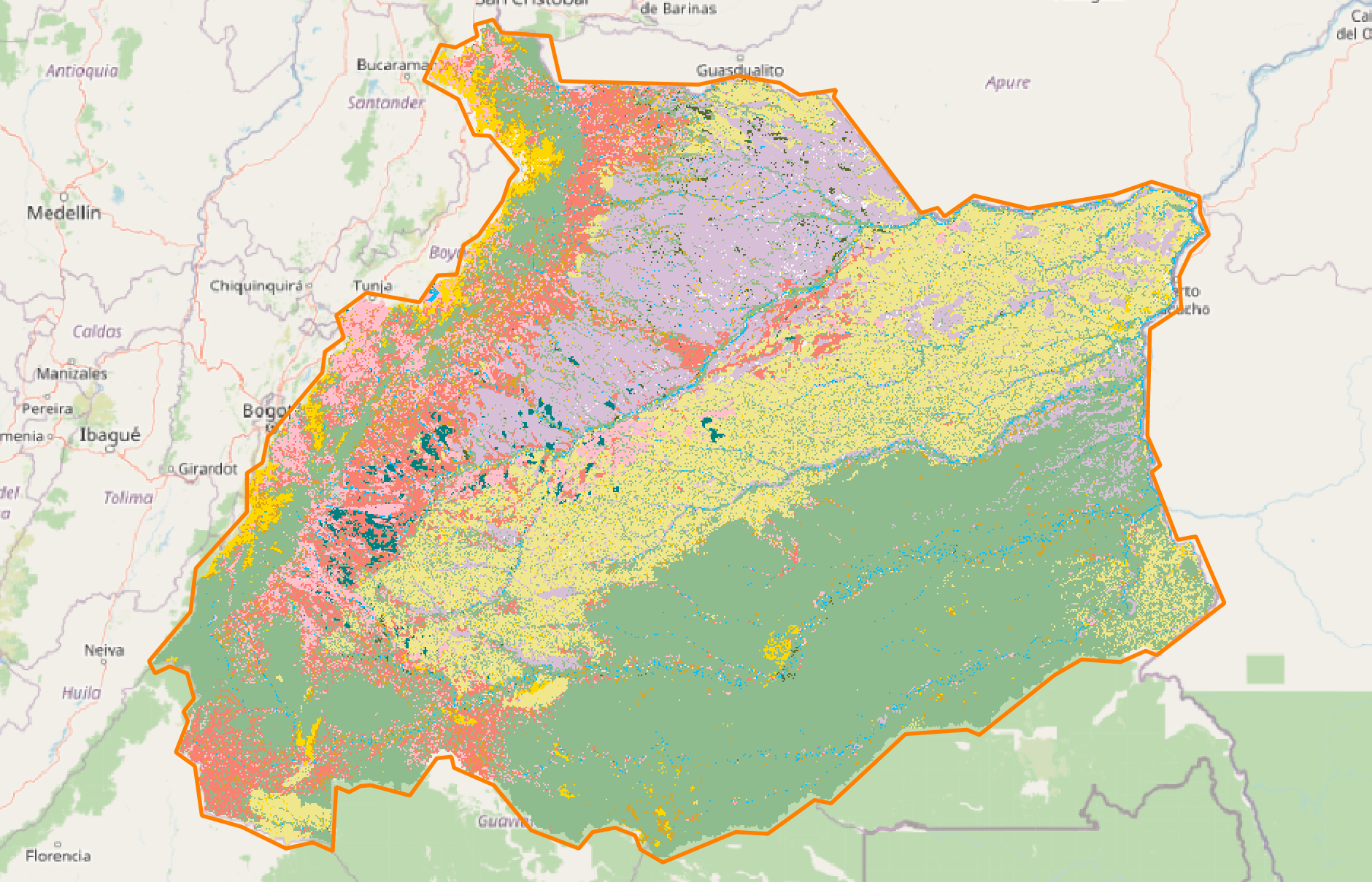 Basemap © OpenStreetMap contributors
Basemap © OpenStreetMap contributors
Model predictions on validation tiles from the 2013-2014 median composite of Landsat 8 imagery:
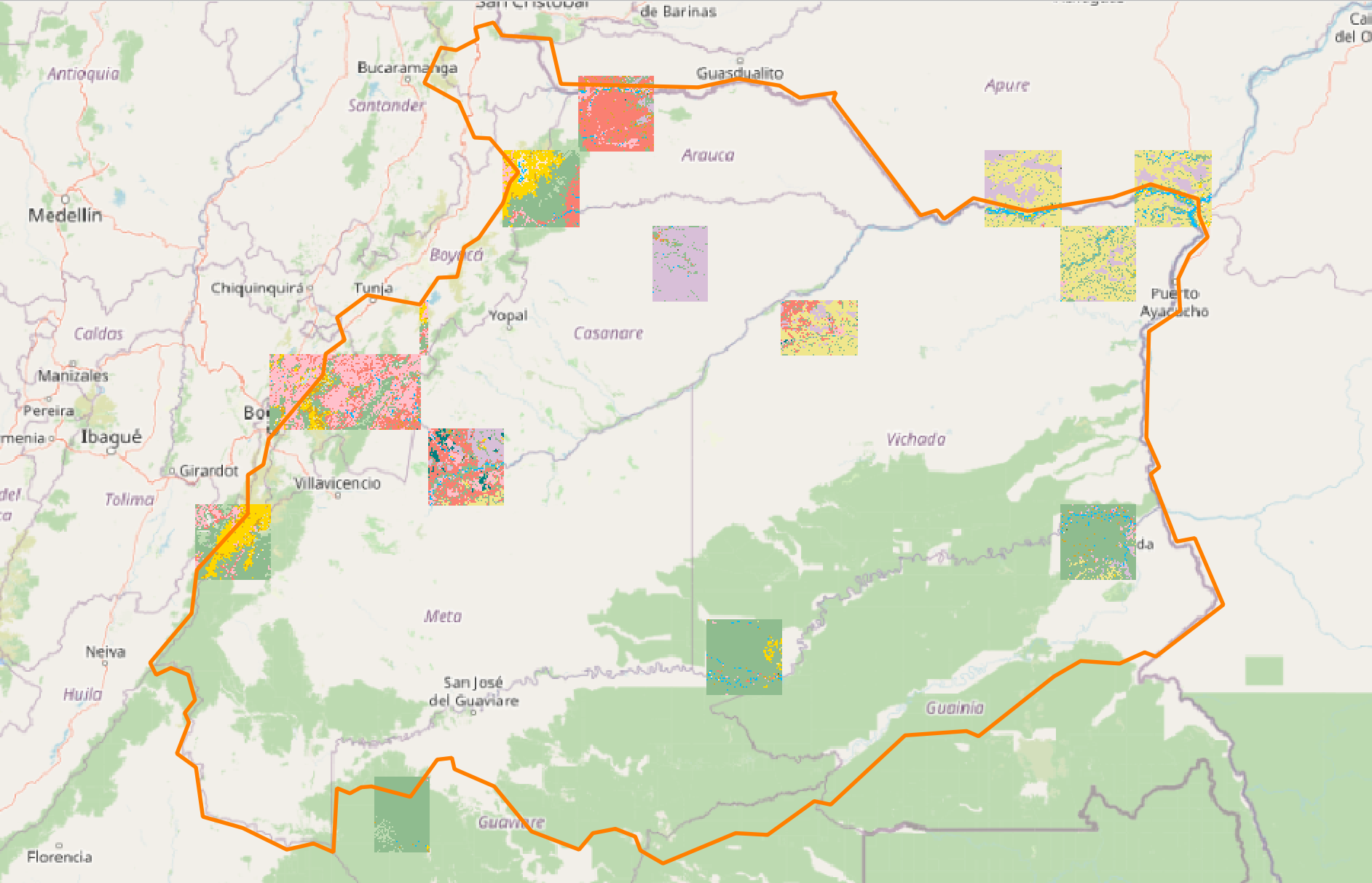 Basemap © OpenStreetMap contributors
Basemap © OpenStreetMap contributors
Model prediction on 2019-2020/04 median composite, the updated land cover map:
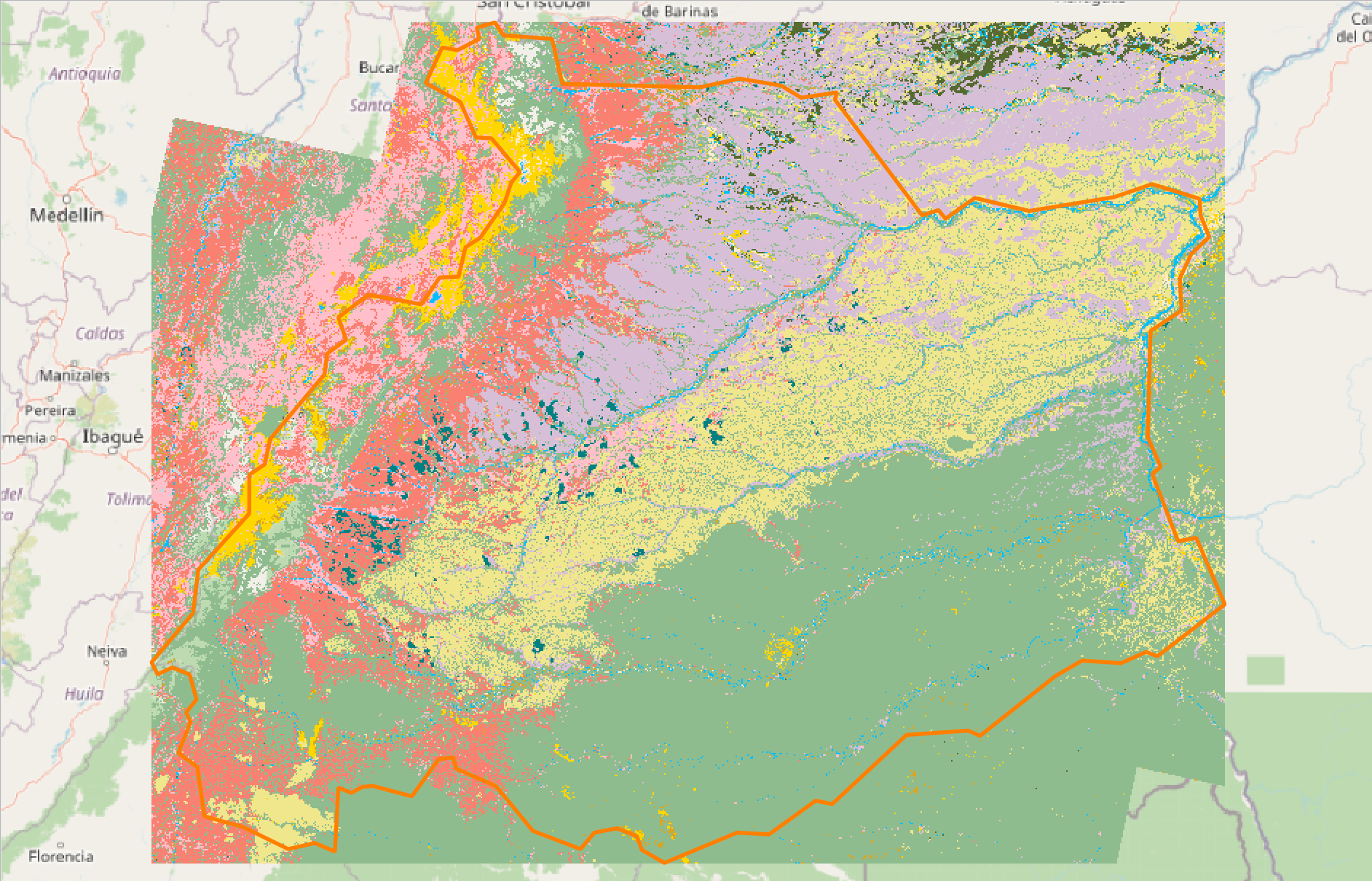 Basemap © OpenStreetMap contributors
Basemap © OpenStreetMap contributors
Setup
Creating the conda environment
At the root directory of this repo, use environment.yml to create a conda virtual environment called wcs:
conda env create --file environment.yml
If you need additional packages, add them in environment.yml and update the environment:
conda env update --name wcs --file environment.yml --prune
Installing ai4eutils
You need to add the ai4eutils repo to the PYTHONPATH, as we make use of the geospatial module there.
Setting up the Solaris package
We need to set up a separate conda environment for using Solaris. Instructions are available on https://github.com/CosmiQ/solaris.
We do not want to install the Solaris pip package inside the wcs environment because it requires versions of PyTorch/TensorFlow that we might not want.
There are two ways to set up Solaris:
-
To install Solaris using their published package on PyPI, first create a conda environment called
solaris, which will make the next pip installation step go smoothly:conda env create --file environment_solaris.yml pip install solaris==0.2.2 -
If installing from source:
Once we clone the repo, add some more dependencies to its
environment.ymlso that Jupyter Notebook ran from ourwcsenvironment can use the Solaris kernel to run certain notebooks:- nb_conda_kernels - ipykernel - humanfriendly
Our fork of Solaris is here: https://github.com/yangsiyu007/solaris
Upstream: https://github.com/CosmiQ/solaris
Setting up an environment for the newer version of GDAL
It seems that in our existing environment, rasterio is not compatible with GDAL>=3.1, which is required for creating Cloud Optimized GeoTIFFs (COGs). We create a separate environment for GDAL to run such commands in:
conda env create --name gdalnew --channel conda-forge python gdal==3.1.2
Terminology
See Satellite data terminology.
Related repositories
The interactive Land Cover Mapping tool; also see finetuning
https://github.com/microsoft/landcover
Collection of utilities used in this repo
https://github.com/microsoft/ai4eutils
Contributing
This project welcomes contributions and suggestions. Most contributions require you to agree to a Contributor License Agreement (CLA) declaring that you have the right to, and actually do, grant us the rights to use your contribution. For details, visit https://cla.opensource.microsoft.com.
When you submit a pull request, a CLA bot will automatically determine whether you need to provide a CLA and decorate the PR appropriately (e.g., status check, comment). Simply follow the instructions provided by the bot. You will only need to do this once across all repos using our CLA.
This project has adopted the Microsoft Open Source Code of Conduct. For more information see the Code of Conduct FAQ or contact opencode@microsoft.com with any additional questions or comments.
License
This repository is licensed with the MIT license. See LICENSE.
